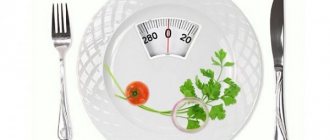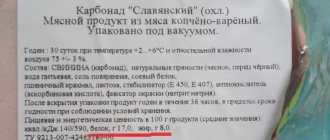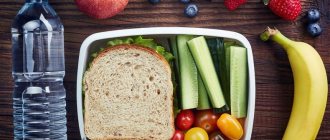Each person, performing any action, expends energy, which is replenished through food. When the balance of calories consumed and expended is disturbed, obesity may occur from excess calories or all sorts of diseases from a lack of calories.
This is why knowing how many calories are expended in certain activities is so important. And for those who are losing extra pounds, such a calculation is simply necessary.
Energy expenditure by physical activity group
The work of the human body is a continuous expenditure of energy that occurs during the functioning of the cardiovascular system, liver, lungs and other systems and organs. According to scientific research, one kilocalorie is consumed per kilogram of human weight.
With simple calculations, it turns out that the human body alone consumes about 1800 calories per day.
The figure is very average, since this indicator is individual and depends on:
- gender;
- weight;
- age (full years);
- growth;
- the presence of fat deposits.
In order to increase the consumption of kilocalories, it is necessary to make additional movements and be physically active.
Now understanding that different physical activities burn calories in different ways, let’s consider sharpening energy by main physical groups:
| Activity group | Possible job | Calories burned per day |
| Sedentary mental work | people working in the office, accountant, | 2250–2500 |
| Sedentary work with muscle activity | teacher, salesperson, cashier, driver | 2650–2800 |
| Working with constant light muscle load | doctor, bank employee, cook or waiter, courier, conductor | 3000–3150 |
| Working with relative muscle load | mechanic, surveyor, painter, agronomist | more than 3500 |
| Work considered hard | shop worker, professional athlete, loader, digger | more than 4000 |
| Hard work | mine worker, steelworker, mason | more than 5000 |
Does cooking help you lose weight?
Cook while standing, use kitchen appliances to a minimum, and then an hour at the stove will destroy 90-100 calories. It is important not to taste anything during the process, otherwise you risk consuming more calories than you burn.
Helpful advice: To increase energy expenditure, increase the intensity of your movements and the speed of doing housework. To make it easier to keep up the pace, turn on your favorite music. This way you can cope with routine responsibilities faster, get a boost of energy and good mood.
How to calculate calorie expenditure for different activities?
There are quite a few tables on the Internet offering to calculate the calories consumed per day. But it is worth noting that they do not take into account factors such as height, age and others.
Therefore, we offer a universal formula that will help you more accurately calculate how many calories you spend per day. Choose the ratio that best suits your rhythm of life:
| Coefficient (A) | Physical activity |
| 1,9 | Everyday active physical activity. Doing hard work. |
| 1,73 | Daily intense workouts twice a day. Performing work that is considered difficult. |
| 1,64 | Intense training once a day, every day. Performing work that is considered difficult. |
| 1,55 | Intense training 5 times a week. Performing work with a relative load on the muscles. |
| 1,46 | Moderate intensity training 5 times a week. Performing work with constant light muscle load. |
| 1,38 | Moderate intensity training 3 times a week. Performing sedentary work with muscle activity. |
| 1,2 | Complete lack of physical activity or its minimum level. Performing sedentary mental work. |
Now let's calculate how many calories you spend using the formula:
(your weight in kg * 10) + (your height in cm * 6.25) – (your age, completed years * 5, for men add +5 to the amount received, for women subtract –161)
The amount you receive must be multiplied by the selected coefficient . This will give you the total calories burned per day.
What are calories?
In fact, calorie is a well-known term, but if you ask many people, they are unlikely to tell you exactly what it is. Moreover, even scientists offer different interpretations. There are now three types of most common calories.
When talking about calories, we are talking about the amount of heat that is needed to raise the temperature of water by one degree. If you don’t go into details (and within the framework of this material, going into details regarding calories is not particularly relevant), then we are simply talking about energy and heat production.
The body requires energy for various processes (including maintaining heat), and the calorie is the most convenient way to measure this energy.
Important! Don't get hung up on the term calories itself, just take the knowledge you need from this system. One gram of carbohydrates and protein provides the body with about 4 calories, and one gram of fat provides the body with about 9 calories.
Accordingly, if you know how many components are in a dish, you can count calories
One gram of carbohydrates and protein provides the body with about 4 calories, and one gram of fat provides the body with about 9 calories. Accordingly, if you know how many components are in a dish, you can count the calories.
Very ancient Soviet reference books gave approximately the following information.
| Type of activity | Brainwork | Physical labor | Active physical work | Sports activities |
| Number of daily calories | 1500-2000 | 2000-2500 | 2500-3500 | 3000-3500 |
Based on this calculation, the menu and much more were drawn up: for example, students and staff of institutes were given fewer calories, since they move less, and more abundant rations were provided for workers. Of course, in some ways such a system is short-sighted, but there is a grain of truth here.
Generally speaking, for an active person, the optimal daily amount is 1500-2500 calories, but here you need to take into account individual characteristics. In addition, the foods you eat matter.
Interesting! Olympic champion Michael Phelps, who is currently the best swimmer in the world and recently even competed with a shark, according to his own statement, was preparing a menu of about 10,000 calories. Of course, Phelps trained vigorously every day.
You can look at photographs of this athlete, he does not seem like a glutton at all.
It's really about the number of calories you burn. By the way, mental activity and physical work can also be costly, since the brain spends the most basic resources first.
How much should you spend to lose weight?
To lose weight, you need to burn more calories than you consume. Therefore, it is difficult to name a specific figure that you need. You need to independently calculate the number of calories you use daily and create a running program for weight loss based on this.
Previously, calorie costs for various activities were given. They were calculated based on daily expenses, that is, a mental worker moved daily (to work, from work, etc.) and performed mental work to spend 1500-2000 calories. You can use this table to understand the number of calories you burn in your daily activities.
Now you will need to create a calorie overexpenditure, that is, add training. At the same time, you need to maintain the optimal amount of calories consumed.
It is best to take the norm at 2000 calories. If you regularly move a lot and work on weekdays, then this amount will be enough for training.
As a result, you will need to burn a little more than you burn in a day. Any training on treadmills will help for this.
Carefully! To lose weight, you should burn more calories than you consume, but not by much, otherwise the body will begin to not accumulate nutrients and more actively store fat tissue.
Calorie consumption during sleep and rest
The human body loses calories even during sleep, because while consciousness is “turned off,” the internal organs remain active. The life process of cells is stable, metabolism occurs, metabolic processes of restoration of expended energy through the processing and assimilation of food.
Calories are burned best during the deep sleep stage.
An average night can consume up to 60-70 calories per hour if you have an average body type. This means you can lose around 500 calories per night . To increase metabolism, the air in the room where you sleep should be cool. Also, you should not neglect the mandatory 8-hour sleep, since Swedish scientists have proven that lack of sleep (less than 8 hours a day) leads to more waking time, which provokes the active production of the hunger hormone - ghrelin.
As for rest, it can be active or passive:
Leisure. This concept includes the continuation of intense activity (physical, mental) with a change in its type.
| Kind of activity | Calories per hour |
| Walking tour | 270–315 |
| Fishing | 103–120 |
| Bowling | 216–252 |
| Sedentary play with children | 121–141 |
Passive rest involves a minimum of muscle movements.
| Kind of activity | Calories per hour |
| Reading aloud | 94–110 |
| Rest lying down without sleep (watching TV, reading) | 64–77 |
| Quiet sitting | 86–100 |
Scientific fact: with active rest, the body recovers faster.
Calorie content - what is it, how is it measured?
If you re-read a physics textbook, you will not be able to find the official term; it was not included in the International System of Units of Measurement, but was invented by a scientist studying physical processes - Johann Wilcke. He called the word “calories” or abbreviated “cal” the amount of heat that is required to heat 1 ml of water by 1 degree. Then this designation is transformed and in the minds of ordinary people and biologists, nutritionists is perceived as the energy of food (although it is classically measured in kilojoules - KJ), necessary to maintain vital functions in the body.
During various body movements, during internal processes (breathing, heartbeat, digestion of food), and in large quantities during mental activity, these same calories are consumed.
When there is a surplus, that is, an excess, a situation occurs when the body stops processing food (namely the BJU contained in it) into heat, since it is not needed in such quantities, and the body begins to put aside proteins, fats and carbohydrates “in reserve” , that is, turning them into a fatty layer.
To lose weight, you need to create conditions of deficit, that is, you must receive less kcal than you expend. The deficiency will be compensated from the same supplies, that is, lipids will be transformed. This process works best during aerobic exercise - calorie burning can be accelerated by running, intense aerobics, cycling, skating, skiing, and long (from 30 minutes) jumping rope.
The second term is the calorie content of food separately and prepared dishes. This question is of great concern to those who want to lose weight and are on a diet. They limit their intake of high-calorie foods. This is the maximum energy that the body takes from one serving, subject to complete absorption. It is worth noting that in fact, food is never digested and absorbed into the blood completely, there is always waste, and this is also prevented by various diseases and situations (indigestion, fast or slow intestinal motility, the absence of some villi on the gastrointestinal tract, etc.).
For comparison, a glass of water has 0 calories, a 100-gram piece of red apple has less than 50, and 100 grams of milk chocolate has 500 or more. So a kilogram of apple fruits can be nutritionally equivalent to one sweet chocolate bar.
Another question is how much of the maximum possible energy the body will receive and how quickly it will do it.
So before you know how many calories running burns, you need to think about how much you take in (eat) during the day. This can be calculated based on the packaging of store products.
Calorie consumption when running and walking
Walking allows you to significantly increase your energy expenditure. The more intense the move, the faster the calories are burned. The flatness is also taken into account: flat road, uphill or stairs. You can calculate lost calories using the formula given above, and the coefficient by which you need to multiply can be found in the table.
| Indicators | Driving on a flat surface | ||
| Speed km/h | 4 | 5 | 6 |
| Calorie burn ratio | 2,4 | 3,2 | 4,1 |
The resulting amount is the calories that would be consumed in a day of movement, but since you do not walk for days on end, the resulting amount must be divided by 24 hours of the day and multiplied by the hours that you were in motion.
Jogging (moderate pace) for half an hour can easily notice an hour of brisk walking.
- So, when jogging, on average, 600 kcal/hour is burned.
- When running in one place, the figure is slightly lower and equal to 500 kcal/hour.
The numbers are averages, since in each case an individual calculation of calories is required.
Wood chopping
The biomechanics of chopping wood resembles kettlebell swings. An hour of caulking - and you will burn 300 Kcal. You can turn on the high-intensity training mode and do, for example, 20 blows with an ax, then a 10-second pause, then another 20 blows - do the exercise as long as you can (or until you run out of wood)
With pinning you will strengthen the muscles of the back, arms, shoulder girdle, trapezius muscles, muscles of the thighs and buttocks.
How to make summer cottage work more effective for your health
Source
Calorie consumption when swimming
Swimming takes up quite a lot of calories and here's why:
- firstly, water provides resistance and all actions require additional effort;
- secondly, usually the water in reservoirs or pools is + 22–26 °C, which is lower than body temperature, so the body expends additional calories to heat the body.
There is a slight deviation in calorie burning depending on the chosen style, but on average it is spent on swimming:
- for women – 260–290 calories;
- for men – 375–400 calories.
The figures are given for a half-hour lesson.
The greater the weight of a person involved in swimming, the more energy is required to move in the water.
Balance exercises
Digging up the ground, planting or digging up potatoes, the summer resident, among other things, performs very useful balance training. The same can be said about work performed using an extension ladder or stepladder.
Women's jeans: before you buy them, you need to pay attention to one detail
“We are still friends”: Derevianko commented on the breakup with his wife
Rare shot: Viktoria Isakova showed her grown-up daughter from Yuri Moroz (new photo)
The benefits of balance exercises can hardly be overestimated - such actions can significantly reduce injuries in older people. According to statistics, people who perform balance exercises suffer 37% fewer injuries from falls and 61% fewer bone fractures.
Calorie expenditure in team sports
Have you ever wondered why fit people participate in team sports? The conclusion suggests itself - team sports help you burn a lot of calories.
| Name of team sport | Calories burned per 1 kg of body weight per hour |
| Basketball | 5,4 |
| Volleyball | 3,6 |
| Football | 6,4 |
| Handball | 6,9 |
| Water polo | 8,6 |
Making the bed
Making your bed burns 17 calories in a quarter of an hour. This is an ideal exercise to jumpstart the body after a long sleep. Try making your bed very actively and you can immediately begin more serious exercises.
The awakening of the Fagradalsfjall volcano interrupted all flights in Iceland
Pencils, a machine and varnish: a guy makes beautiful vases with a minimum of tools
“We loved him so much...”: why Maya Menglet could not forgive her father for a long time
Calorie consumption when working at a computer
It is possible to burn calories while working at a computer, and this was proven by a group of Canadian scientists who performed an interesting experiment. 200 people took part in it, who were divided into two groups. Some were put in front of a computer and told to do whatever they wanted, while the second group was given a logical thinking task. The results amazed even the scientists. The first group consumed minimal calories in an hour and a half, but the second group, which strained its thinking centers for the allotted time, showed results on average of 250 calories.
Even with automatic typing, you can burn up to 140-160 calories per hour.
Averages
Another important point is worth noting. The number of calories burned depends on two factors. The type of action a person performs influences. The more muscle groups involved in the process, the better the final result. However, it is necessary to take into account the metabolic rate and physical characteristics of the person.
Always in high demand: is it worth opening a business installing air conditioners?
They stopped expressing their opinions: signs of a decline in the morale of subordinates
They leave because of momentary revenge: mistakes during dismissal that affect a career
Bodybuilders with large muscle mass burn much more calories. The amount of energy expended is lower in slender people.
Don't forget about a person's age. Over the years, the rate of metabolic processes slows down. This leads to a decrease in calorie expenditure. Habitual activities require less energy. It is simply impossible to ignore this fact. Otherwise, all final calculations will be useless.
Energy expenditure and calorie expenditure during housework
While doing housework, you can actively waste calories. It is especially effective to work in the yard if you live in a private house. For clarity, here is a table of calorie costs for homework.
1. Work at home:
| Household chores | Calories burned per 1 kg of body weight per hour |
| Dusting | 1,1 |
| Washing windows, mirrors | 3,8 |
| Cleaning with a broom or vacuum cleaner | 2,9 |
| Ironing | 1,0 |
| Washing dishes | 2,0 |
| Mopping floors | 1,9 |
| Cooking | 1,1 |
2. Yard work:
| Yard work | Calories burned per 1 kg of body weight per hour |
| Wood chopping | 4,3 |
| Digging in the garden | 4,6 |
| Weeding beds | 3,3 |
| Lawn mowing | 2,9 |
| Gardening | 1,9 |
Washing and ironing work together
A washing machine is now found in almost every home; it makes life much easier and saves time. But there are things that have to be washed by hand the old fashioned way. This is great for burning calories. When washing clothes by hand, you can lose up to 120 kcal per hour. Hand washing curtains and blankets takes up to 220 kcal per hour, which replaces 30 minutes of work in the gym.
Hanging your laundry after washing allows you to additionally get rid of 25 kcal in ten minutes.
Clean linen requires ironing. If you iron while standing, you can get rid of 157 kcal in an hour. When performing the same work while sitting, the figure decreases to 100 kcal. Add folding laundry after ironing, that's another 120 kcal per hour.
As a result of all manipulations, you have a result equivalent to a full-fledged water aerobics workout.
Calorie consumption when dancing
All young people, regardless of their size, love to dance, but they probably didn’t think that they burn calories with rhythmic body movements in dance. Dancing is one of the most fun ways to lose weight. And most importantly, to dance you don’t need any physical training, warm-ups, etc. It’s enough to listen to music and dance. And it doesn’t matter where: in the studio, at home in the kitchen, in a nightclub. On average, a girl weighing 60–65 kg loses 240–350 calories while dancing . In addition to getting rid of excess weight, this type of activity lifts your mood and energizes you.
Ballet is considered the “record holder” in getting rid of calories, since an hour of practicing this dance will help you say goodbye to 650 calories.
What other advantages do dacha work provide?
In addition to the benefits for bones and muscles, working in the garden perfectly strengthens the human immune system. This happens not only because the work is performed in the fresh air. Various beneficial microorganisms living in the soil also strengthen the immune system well.
Thus, according to doctors, the benefits of active work in a suburban area should not be underestimated. Such work has a beneficial effect not only on a person’s physical condition, but also on the emotional one.
Found a violation? Report content
How many calories are burned during sex and orgasm?
Have sex and lose weight - a great slogan for those trying to lose weight. British scientists were not lazy and calculated that sexual intercourse with the activity of both sexual partners can burn about 600 calories per hour. This is equivalent to an hour of running at a fast pace or an hour of ballet classes!
The concept of sex covers not only the sexual act itself, but also foreplay in the form of kissing, which on average costs up to 50 calories. In addition to metabolism, which helps convert calories into energy, during caresses, hormones are activated that help convert subcutaneous fat into energy.
During sex, all parts of the body are involved, the heart contracts much more actively, the respiratory system works to the maximum. During orgasm, all indicators additionally increase significantly. We can definitely say that sex is a great and most enjoyable way to burn calories.
Having sex can be compared to fitness: the higher your sexual activity, the more calories you can say goodbye to.
Burn calories doing daily housework
Household chores and the gym are two incompatible things, especially at this time of year.
But what if we told you that household chores can actually replace the gym? By doing some household tasks, you can burn as many calories as you would by exercising for 20 minutes on an exercise bike. This is what we call multitasking! Spending an extra 30 minutes every day doing household chores can help you shed a whole kilogram within a month, so if you try hard enough, you can effortlessly achieve your desired shape by New Year's Eve and fit into your favorite dress. How many calories do you burn when you make your bed?
By making your bed, you burn 70 calories per hour, which is the equivalent of 20 minutes of Pilates.
How many calories are burned during hand washing?
You can burn 148 calories in an hour while washing and folding laundry, which means you can reward yourself later with one medium glass of wine.
How many calories are burned while ironing?
An hour of ironing burns 157 calories, which is the equivalent of one bag of chips, or a 30-minute water aerobics class.
How many calories do you burn when you sweep?
By sweeping, you burn 161 calories per hour, which is equivalent to 30 minutes of cycling.
How many calories are burned when you dust?
An hour spent dusting burns 166 calories. You'll be able to treat yourself to two nutritious chocolate bars that would otherwise cost you 20 minutes of aerobics.
How many calories do you burn when you vacuum?
When you vacuum, you burn 175 calories per hour, which is the equivalent of a medium latte or a 20-minute run.
How many calories are burned when you wash windows?
An hour of window cleaning burns 231 calories. For the same results, you would need to do 25 minutes of circuit training, which is the equivalent of eating one custard donut.
How many calories are burned while cleaning the bathroom?
Cleaning the bathroom burns 256 calories per hour. Instead, you'd have to do 20 minutes of spinning to burn the same amount of calories.
How many calories are burned while washing a car?
An hour spent washing your car burns 314 calories, which is the equivalent of 1 brownie or 45 minutes of swimming.
How many calories are burned while mopping?
Mopping your floors burns as many calories as washing a machine (314 per hour), meaning you can treat yourself to a cup of mocaccino with whipped cream without feeling guilty.
Table of calorie consumption for different types of activities
| Kind of activity | Calories burned per 1 kg of body weight per hour | Approximate costs for a weight of 60-80 kg |
| Run | 10,7 | 450–720 |
| Walking with the family | 1,4 | 87–115 |
| Bathing a child | 2,7 | 116–215 |
| Jumping rope | 7,7 | 463–617 |
| Gymnastics (vigorous) | 6,5 | 390–520 |
| Cycling at a medium pace | 4,3 | 257–343 |
| Car driving | 1,4 | 87–115 |
| Shopping | 3 | 180–240 |
| Games with children with moderate activity | 4 | 241–321 |
| Buying groceries | 2,1 | 129–171 |
| Hair Styling | 2 | 121–161 |
| Knitting | 1,7 | 103–137 |
| Talking while eating | 1,3 | 80–106 |
Unusual ways to burn calories at home
We’ve talked about the main ways of burning calories, now let’s discuss unusual and interesting options for converting calories into energy:
- 10 minutes of laughter burns up to 40 calories.
- Chewing gum for an hour will burn 11 calories.
- Reading aloud for an hour will save you 90 calories.
- If you sing while taking a shower, then you can add an additional 10–20 to the standard 35–50 calories.
- Playing cards with your household will help you burn 50 calories in an hour.
- Dressing and undressing can burn 80-120 calories, so try on items in your closet often.
- Moving furniture around your apartment for an hour can convert 381 calories into energy.
- 1 hour of massage to your loved one, maybe erotic (how to do it is written here) will help you burn 235 calories, and if the massage is continued with foreplay, the body will get rid of almost 900 calories.
Climber
This is one of the most effective exercises that gives incredible effects on the whole body, and all because you have to use the whole body, provided that the exercise is performed correctly. One of the benefits of the exercise is the acceleration of blood circulation, as well as effective training of the abdominal muscles. And not just the press! The exercise perfectly engages the muscles of the core, thighs, buttocks, calf muscles and shoulder muscles, and this in turn provides additional calorie burning. A few sets of 50 reps while watching TV is all you need.
exercise climber technique
Execution technique
- Starting position - emphasis on your palms and toes (plank, as for push-ups). The body is parallel to the floor. The arms are perpendicular to the floor: the shoulder and elbow joints, as well as the wrists, are clearly aligned one below the other. Elbows slightly bent (do not lock your arms at the elbows). Don't arch at the waist. The stomach is pulled in.
- Make sure that your abdominal muscles are tense throughout the entire exercise.
- In the plank position, check that the pelvis is tucked “under you, down” (this way you will eliminate tension in the lower back); straighten your shoulders, keep them as far away from your ears as possible; The head and neck are a continuation of the spine.
- As you exhale, pull your knee towards your chest.
- As you inhale, return to the starting position.
- Alternate legs. The pelvis does not rise when moving, hold it as in a static plank. Breathe calmly, evenly, don’t stop or hold your breath. Breathing depends on the pace of the exercise.
After a few of these approaches, you will definitely burn all the calories you ate for breakfast today, and perhaps some lunch calories too! But doing a mountain climber for a minute or two is a real challenge! So combine this exercise with others, such as jumping jacks, lunges and burpees, and you can burn about 300 calories in 30 minutes!
Of course, these are average numbers. The lower your weight, the fewer calories you will lose by doing the exercise. For example, if you climb for a minute, you can burn 8 calories if your weight is 57 kg, 10 calories if you weigh 70 kg. and 12 calories – if your weight is 84 kg.
climber exercise
There are many ways to make this exercise easier and more difficult. I advise, one way or another, to use all options, since they are too different in dynamics and load.
- Climber walking. We pull our knees to our chest one by one (with and without touching the floor).
- Climber in a jump. We change legs with a jump. In the final position (at the chest) (with and without touching the floor)
- Climber running. We imagine that we are running upward. In the final position (at the chest) fixation is minimal.
- Diagonal climber. Here we can either walk or jump. The knee is pulled towards the opposite elbow. The load is shifted more to the oblique abdominal muscles.
- Climber "Crocodile" ("Reptile"). Performed by walking or jumping, with or without placing the foot on the floor. The knee is moved to the side.
- Climber with a high jump. Starting position: one leg is brought forward into a deep lunge. Next, we change legs with a high jump. Accordingly, the second leg stands in a deep lunge. Ideally, the foot is next to the palm.
Interesting facts about calorie expenditure
Calories are not all the same. As you know, one gram of different foods contains different amounts of calories. In 1 gram:
- carbohydrates - 4 calories;
- protein - 4 calories;
- fat - 9 calories;
- alcohol - 7 calories.
To lose extra pounds without harming the body, you need to create a 30% calorie deficit per day.
If you count calories and maintain the above deficit, you can painlessly lose 3–4 kg in a month.
Briefly about what calorie content is and why it is needed for humans
Calorie content is the energy value of food with which energy enters the body after it is fully absorbed. We can talk about the calorie content of a product when we talk about how much protein, fat and carbohydrates are in one hundred grams of a dish. For almost 100 years, humanity has attached great importance to the word “calorie” in the field of nutrition, although previously, until the beginning of the 20th century, they were known simply as the heat emitted by an object. Today, almost every girl, and even men, calculate the calorie content of their dishes in order to not to gain extra pounds, but on the contrary, to lose them by removing excess fat from the hips, buttocks, waist, and sides. Some people need calories to gain weight (this usually applies to athletes who play professional sports).
The human body spends energy on:
- movement;
- thinking;
- breath;
- pumping blood;
- delivery of nutrients and oxygen to body cells.
A person receives energy regularly from food.
A person receives energy regularly from food. The more he eats, the more energy he will receive. Each product contains 4 kcal in proteins and carbohydrates, and 9 in fats. The body receives calories after the dish is absorbed through the gastrointestinal tract. For example, one hundred grams of oatmeal contains 6 grams of fat, 51 grams of carbohydrates, and 12 grams of protein. Multiplying by the calorie content of each component, one can obtain that one hundred grams of oatmeal will contain 4*51+4*12+9*6=306 kcal. This is exactly how much the body needs to convert carbohydrates into glucose, fats into glycerol, and protein into amino acids.
Thanks to amino acids, the body acquires new building material for cells and muscle fibers. Glucose nourishes cells, especially the brain. If you eat too many carbohydrates, excess glucose will be stored in the muscles, making them flabby. Fat is needed so that the body has fuel for vital processes. Some part is processed into cholesterol.
Important! Excess fat consumed with food is not removed from the body, but settles on the sides, buttocks, hips and waist, which girls then struggle with stubbornly. If you are following a diet to increase body weight, then during the day you need to consume:
If you are following a diet to increase body weight, then during the day you need to consume:
- 25-30 percent protein;
- 40-45 percent carbohydrates;
- 30-35 percent fat.
If a girl goes on a diet to reduce body weight, then the numbers will be like this:
- up to 30 percent protein;
- up to 50 percent carbohydrates;
- up to 20 percent fat.
Important! There are 1000 calories in one kilocalorie. This should be remembered because often the manufacturer omits these three zeros when indicating the energy value of the product in calories, although in fact they mean kilocalories










